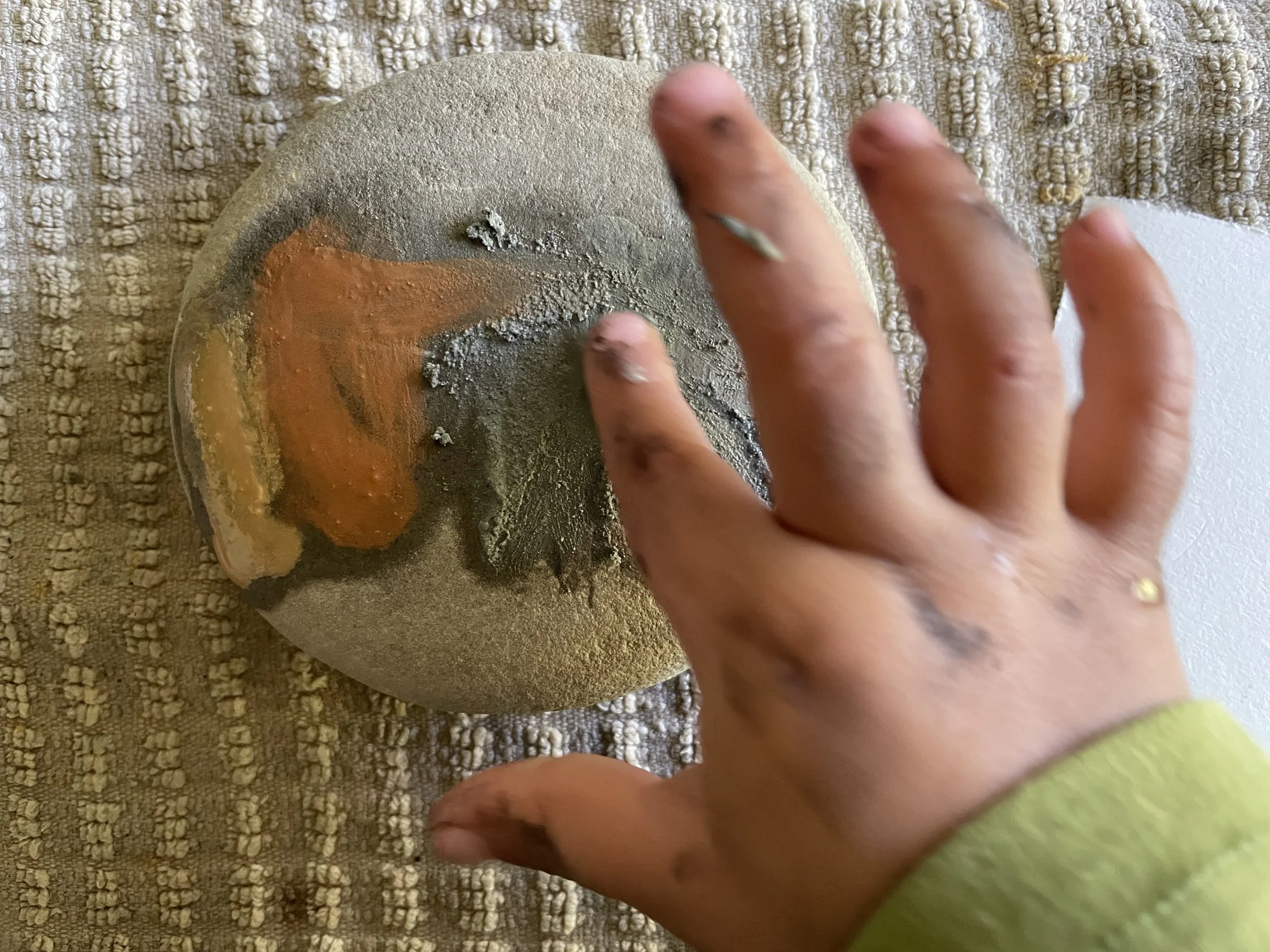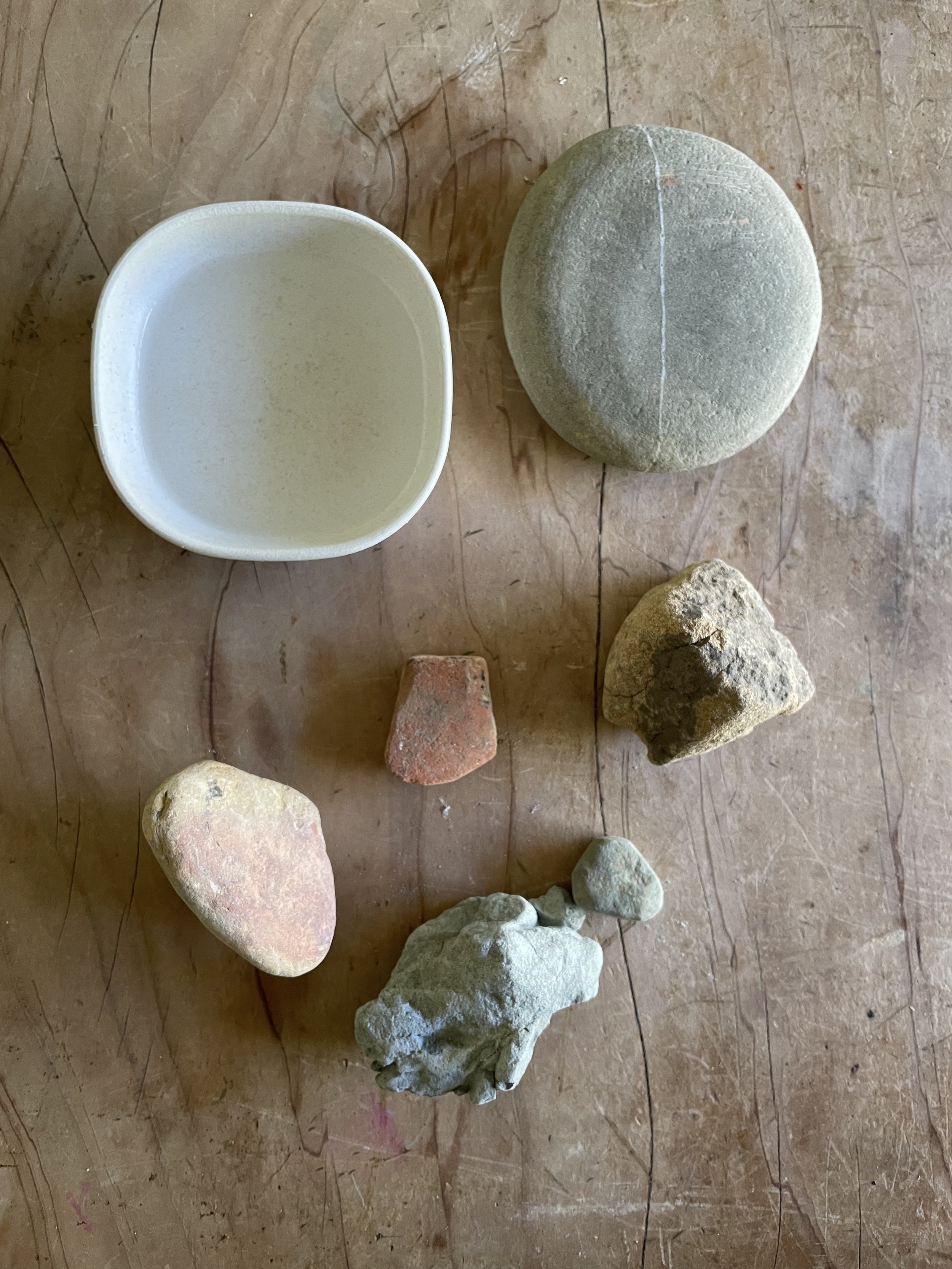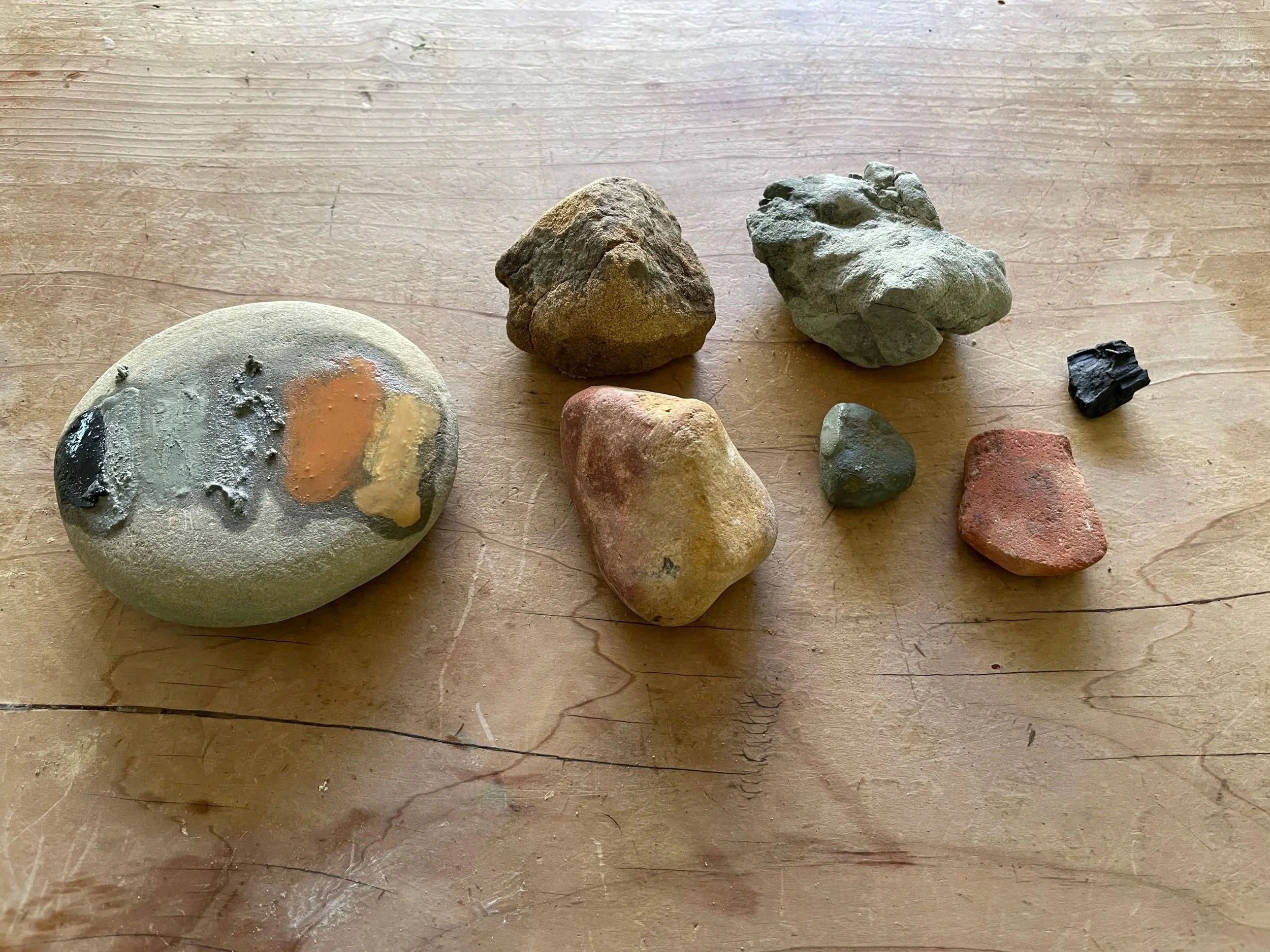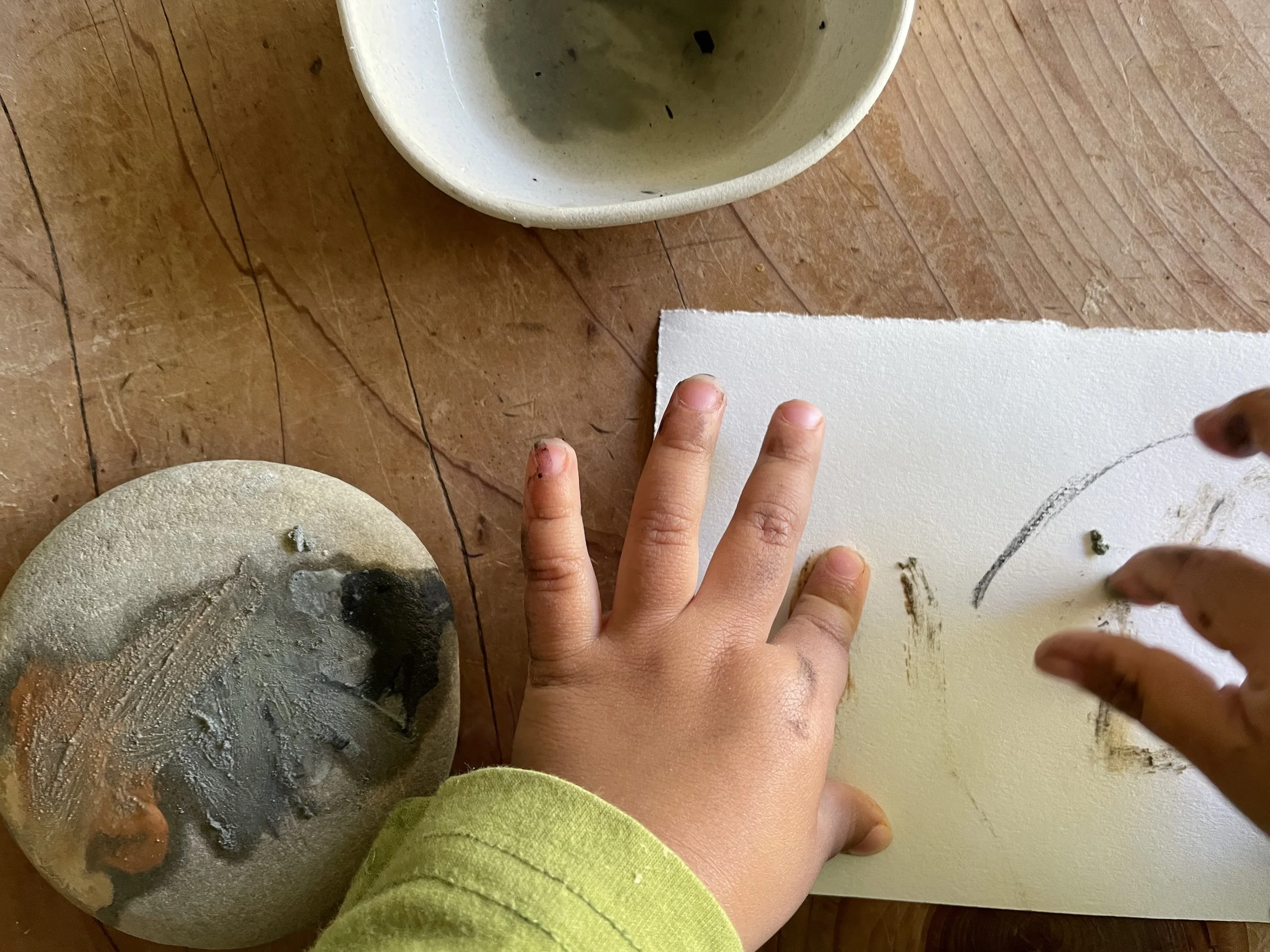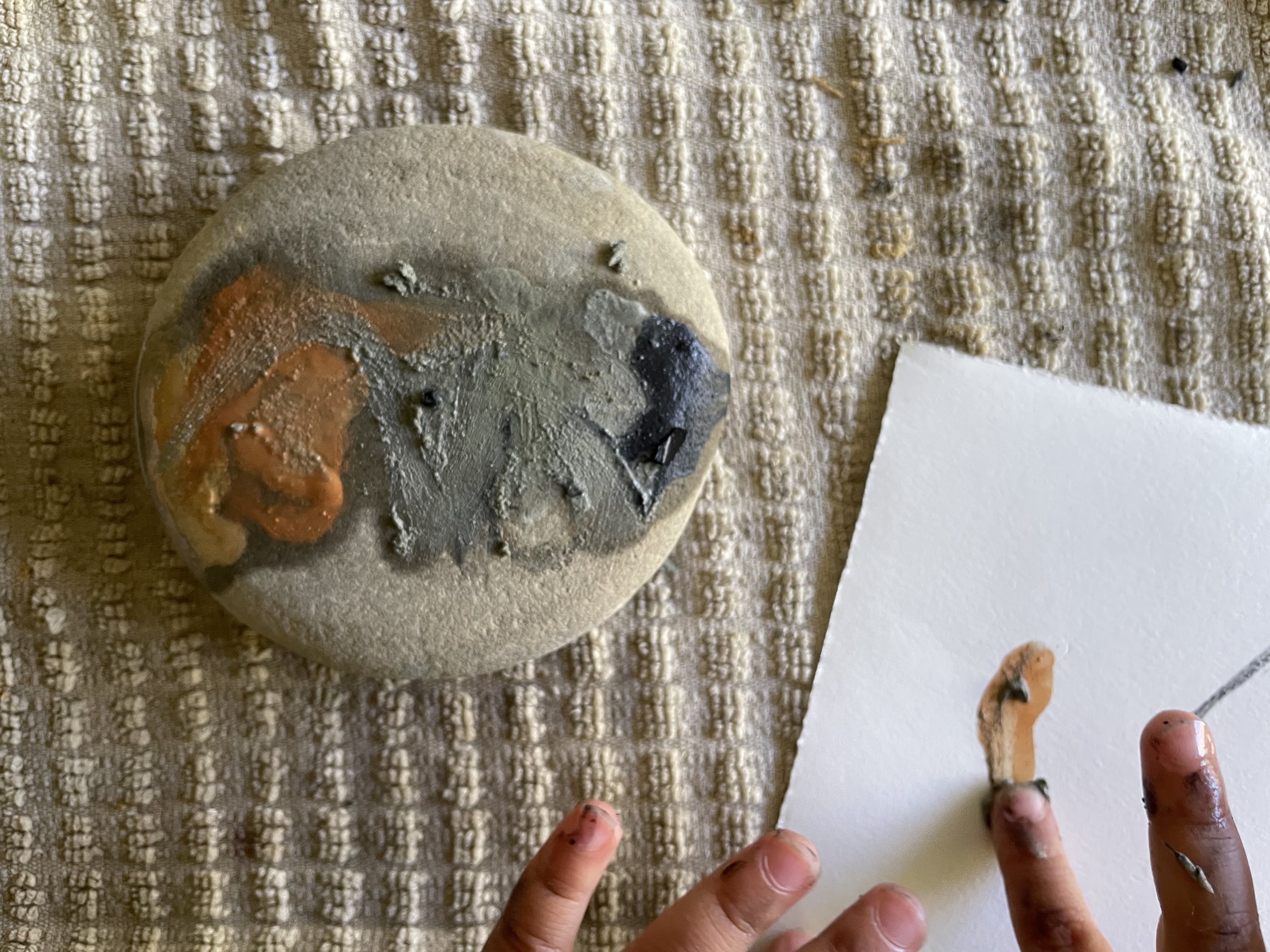Painting with Earth Pigments
Photos: Meg Handler / The Human Nature Center
Soil is one of the earliest natural paint sources, and people have been decorating homes, tools, and artwork with earth pigments for thousands of years. You can carry this tradition forward with simple materials from your own landscape.
What you’ll need:
A hard, flat stone, like a river or beach stone
A cup of water
A selection of found stones that make a mark when rubbed on a harder stone
A paintbrush
A piece of heavy paper
What to do:
Gather your stones. Look for rocks that show color when rubbed—reds, yellows, browns, or blacks. Creek beds and walking trails are good places to start. Be sparing and give thanks for any rocks you collect.
Test for color. Rub a stone on another harder rock to see if it leaves a mark. If it does, it will make paint.
Wet your pigment rock. Dip it in water to soften it.
Grind your color. Rub the wet pigment stone back and forth on your flat stone until a small pool of color appears.
Paint. Dip your brush in the color and paint designs, patterns, or messages that speak to you.
Experiment. Try mixing colors, or paint on paper, bark, or wood. Each rock and surface will give a different effect.
If you’d like to explore further, look for The Book of Earth by Heidi Gustafson or the work of artist Dorike Schreurs, who both teach the art of finding and creating with natural pigments.

